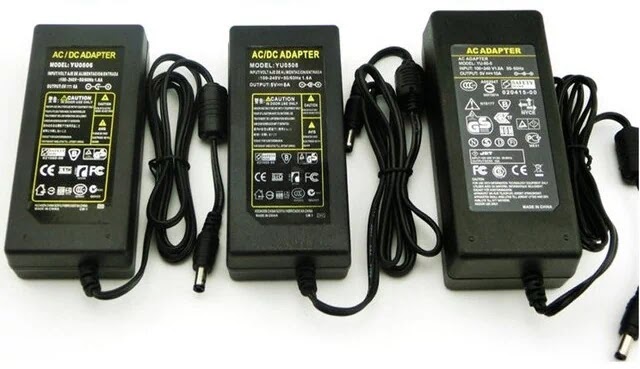Maybe some of us will be confused about choosing the type of power supply that we will use as a power supply for our electronic equipment. For example, transmitters for communication or any electronic device can use a switching type power supply or a transformer. but each has advantages and disadvantages. here we will discuss a little about this.
DC Power Supply Using Switching
Switching Power Supply
The advantages of PS switching:
1. Light weight
2. High efficiency 70% - 90% (some say up to 83%)
3. The centralized design is more reliable in cold working temperatures
4. The current price is cheaper
5. The insulation from the transient mesh is more good (more than 60db)
Disadvantages of PS switching:
1. Obtaining ripple voltage is more difficult / at least 20-50 mVpp. this corrugation voltage is the ratio of the measured voltage (ac) to the measured voltage dc. (corrugation voltage is directly proportional to load current) easier ripple = noise
2. RFI (Radio Frequency Interference) / Nyepleter to radio receivers (for FM breakers usually), need a good filter compared to using transformer models (linear ps)
3. Less regulation good (but more efficient) and this regulation also depends on each designer from the factory
4. Need an input voltage regulator to stabilize.
DC Power Supply Using a Linear Transformer
Step Down Transformer / Transformer
The advantages of linear PS (transformer):
1. Not difficult to get a ripple voltage (ripple) of 5mV
2. Better regulation than PS switching
Disadvantages of PS switching :
1. Greater physical and weight
2. Less reliability at high temperatures (the hotter the PS power transformer will decrease)
3. Isolation from the transient grid is very less than with PS switching
4. Low efficiency / Easy heat.
5. The price is expensive.
6. Voltage Drop is higher than Switching.
PS switching is more widely used for continuous transmission (ON continuously), usually for broadcasting which still uses mosfet or BJT transistors, because of its efficiency, lightness, efficiency in supplying large loads, while linear PS (transformer) is mostly used for audio systems. , (because of its advantages which can reduce the ripple voltage by 5mV)
For stability PS switching is actually much better when working for large loads, but the input voltage of ps switching must be maintained (using stabilizer/ups)
Whereas for linear PS it is not good, because this voltage is very influential on the temperature of the transformer (email wire to the transformer or transformer iron). using a transformer.
Suggestions:
1. PS switching is much better when used for 24-hour equipment supply, because it is not affected by temperature
2. When using equipment that requires much greater power or current, use ps switching (especially those that are continuously ON).
3. If you like audio, choose linear PS, it is safer than the ripple voltage which can interfere with audio, even though it is very small. For example, maybe there are colleagues who use PS switching, there is a small buzz, not a buzz, this is the ripple, but it can be overcome if the assembly of the regulator is better.
For myself, I use a 40 A transformer for the transmitter which I usually use with Konco2 on the radio.
